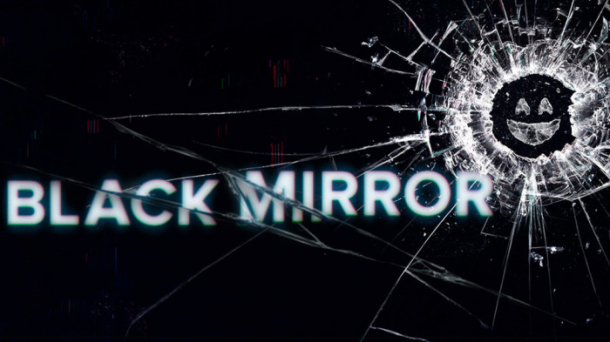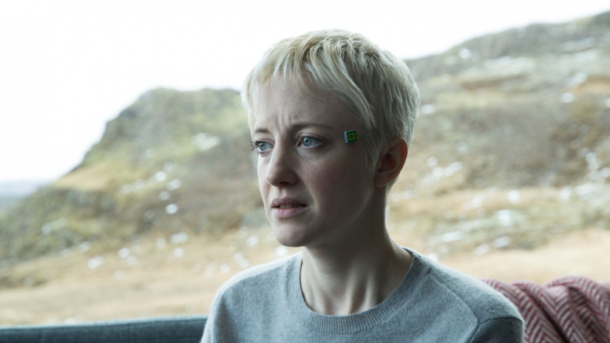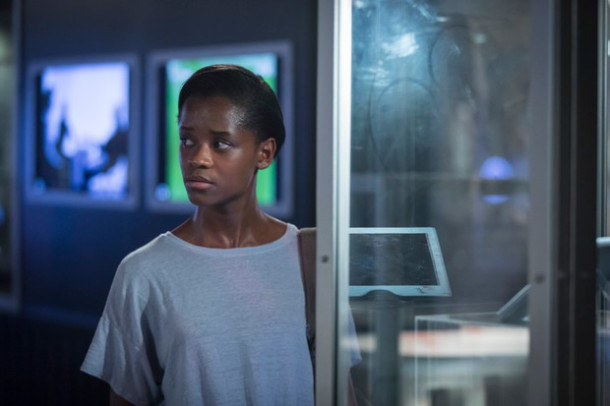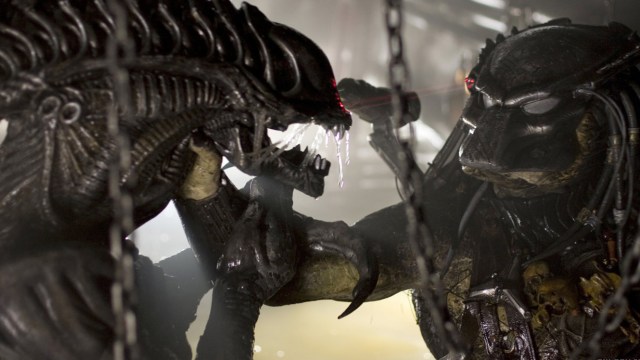
The latest and final season of Charlie Brooker’s Black Mirror went up on Netflix in late December, and it’s just as twisted and soul crushing as the rest of them. Now that our Queens have had time to reflect on the series here is an Episode by Episode review of Season 4.

Episode 1: USS Callister
Discussions centring around white, male nerd culture have been quite common as of late. Following the release of ‘The Last Jedi’ and the subsequent barrage of toxicity that came from disgruntled, largely white, male fans of the ‘Star Wars’ series, the issue of the way in which this group came to the forefront of conversations. This idea, however, that this particular sub-group can be deeply toxic, misogynistic, and hateful, is one that has been floating around since the ‘Gamergate’ controversy of 2014. Since then, it has been clear that ‘nerd’ culture is threatened by the relentlessness of these kinds of people. Their insistence on attempting to exclude women and people of colour from their favourite films, sci-fi programmes, and games is there on websites such as 4chan, Reddit, and Twitter. Their mentality is dangerous and must be challenged. The questioning of this attitude is exactly what the first episode of the fourth series of ‘Black Mirror’ does, in an incredibly satisfying manner.
‘U.S.S Callister’ opens aboard a ‘Star Trek’ inspired spaceship, where a daring captain leads his crew into adventures across the galaxy and, in traditional ‘heroic’ style, kisses the women aboard while his male peers cheer him on. At first, it looks like the entirety of the episode will take place in space and will consist of the travels of Captain Daly (Jesse Plemons) and his team, in their multi-coloured, seventies-themed world. In a typical ‘Black Mirror’ manner, however, a twist is soon revealed. In reality, the fearless Captain Daly is Robert Daly, an ordinary man that helped to begin an intense gaming experience, in the same vein as VR. Daly is rather ostracized by his colleagues at Callister Inc. and, initially, it seems that we should feel sorry for him. Any shred of sympathy we have is soon ripped apart as soon as we realise that the U.S.S Callister itself is a twisted playground made from Daly’s imagination, in which exact replicas of those that have supposedly wronged him serve as his crew and exist only to please him. What follows this revelation is disturbing, tragic and, at times, hilarious.
The rest of the episode is essentially a brilliantly executed takedown of the often poisonous culture of the white, male nerd that I mentioned before. It reveals some terrifying truths about men like Daly – controlling misogynists that feel like outcasts – along the way but comes to a satisfying conclusion as the clones under Daly’s thumb decide to take agency for themselves. ‘U.S.S Callister’ sets the bar high for the remainder of the series and quickly establishes itself as one of the best episodes in the entirety of ‘Black Mirror’. It is both chilling and brilliant. Expertly done. –Hannah Ryan
Episode 2: Arkangel

Directed by none other than Jodie Foster, the first woman to ever direct an episode of Black Mirror, Arkangel is perhaps the most realistic and close to home story in this season. The episodes tech comes in the form of its title, Arkangel, a parental control implant inserted into a child’s head which can then be monitored from a tablet screen.
The parent in question in Marie, who accidentally loses her daughter in a park when she is only a few years old, and is so shaken by the incident she seeks out a free version of Arkangel as a method to keep an eye on her child, Sara. Marie monitors Sara’s vitals, location and even her vision through an optic camera that feeds back everything Sara is looking at. Marie can apply filters to any material deemed ‘stressful’ so Sara cannot hear or see it, such as a barking neighbourhood dog.
Sara grows up being bullied in school because of her reputation as a ‘snitch’, her mother watching her every move, and as she progresses to her teens she harbours slightly more rebelliousness and resentment than your usual teen when her mother finally allows her to live freely without Arkangel as she removes the filters and hides the tablet in a cupboard.
It would be fair to say that what follows is your standard ride in teenage experimentation; making out with boys, sneaking out, first sexual experiences and trying drugs. Marie’s anxiety over Sara’s whereabouts is the star of the episode, it’s a lesson in parental madness. The third act of the episode climbs from Marie’s shock and disgust to her outright destroying her daughter’s life, each few minutes Marie’s anxiety building with one shameful act against Sara after another, eventually cumulating in Sara’s violent comeuppance.
Arkangel’s greatest feat, just like with any of the top Black Mirror episodes, is that it’s never hard to fathom. Parents watching will understand the fear and nervousness of waiting for your child to come home and teens will surely be shaking their heads over Marie’s actions. I genuinely don’t think that this effect could have been achieved without Jodie Foster’s touch, there is something so ingrained in women as caregiver’s and mothers that would not have been properly portrayed through a male director. However, at times Arkangel does not have the struggle between what is wrong and right that we see in other episodes, Marie never seems to question what she is doing, never really fights strongly against monitoring her child, and that is frightening. It shows that we are entering an age where parents love control of technology (i.e giving your kid an iPad to shut it up) over allowing their children to experience the world fully and naturally. –Chloe Leeson
Episode 3: Crocodile

This episode is not made for the faint hearted. But I guess it comes as no surprise, since we’re talking about Black Mirror.
Crocodile starts off with a pair driving home, drunk, after a night of partying. Rob hits a man, and out of panic decides to drop his body in the lake, and forces his girlfriend, Mia, to help.
It’s fifteen years later, and the once couple meets yet again, but this time Rob is riddled with guilt, and determined to confess everything. Mia gets so scared that she strangles him, which leads her to murdering an entire family, just so she can continue living her seemingly perfect life.
This story is about fear, and what it can do to us, if we let it. It can destroy us and lead us into destruction, which happens with Mia. Perhaps the ultimate question revolves around Mia’s innocence and humanity. She could’ve given herself up multiple times throughout the story, but she choose murder, again and again. I could not imagine a scenario where I would genuinely feel sorry for her.
I hated this episode. Maybe a year ago, I would have loved it, as I was really into dark, psychological content back then, but now, it just made me want to vomit. Don’t get me wrong. Of course, the cinematography, the soundtrack and the acting were amazing, but the story is just way too dark for me. The idea of the recaller is really scary. The twists were really exciting, it just wasn’t for me. –Eszti Jaszfalvi
Episode 4: Hang the DJ

Any episode titled after a Smiths song was sure to win me over. Add an intriguing premise—a dating app pairing you with your perfect match with 99.8% certainty— and an endearing lead couple, and you’ve got a recipe for a solid episode of television. Not that this episode was formulaic: like the best of Black Mirror, “Hang the DJ” shows us that things are never quite what they seem. We are given two main characters, Frank and Amy, with palpable, sweet chemistry; it’s refreshing to see genuine and awkward flirting. When their relationship is given a lifespan of only twelve hours, we immediately wonder how perfect The System could possibly be if it pulls these two apart; they wonder the same thing. The lyrics of The Smiths’ “Panic” invoked by the episode’s title provide a guide to reading it: “hang the blessed DJ, because the music that they constantly play, it says nothing to me about my life.” The DJ is supposed to curate the perfect soundtrack; the dating technology is supposed to find your perfect match. But what happens if they’re not doing a good enough job? The only option, then, is to rebel against the System, which is what Amy and Frank ultimately decide to do.
It is, of course, ironic to say the episode can be described by a song proclaiming the irrelevancy of modern music to life. That’s the point: when it seems Amy and Frank have escaped the flawed System, it is revealed that they have been part of the system all along, one that actually does work. The couple we saw were simulations, used by the dating app to prove compatibility: rebelling against the system is a test which confirms they are meant to be together. What seemed to be a parable on how technology can stunt love or true connection now says something different; just as we think it says nothing about our lives, we are proven wrong. There’s something very romantic about Amy and Frank’s arc, how 998 times out of 1000, they’d rather leave everything they know behind than be apart. The attention to detail to leading up to the reveal is incredible: the episode is impeccably art directed, with the scenery and clothing cast in solid colors, lacking patterns or logos. The characters’ lives are stripped of any references to jobs, families, hobbies, or anything beyond dating, really. As soon as we exit into the real world, suddenly things are busy, noisy, more complicated, perhaps uncertain. But the moment when Amy and Frank, 99.8% matches, finally lock eyes across the crowded space— “Panic” playing in the background, smiles spreading across both of their faces— is music to my ears. –Katie Duggan
Episode 5: Metalhead
Episode five of the latest season of Black Mirror stands out from the others for a number of different reasons. The most obvious being that it’s shot entirely in black and white and the other being that with the exception of the first couple of scenes Maxine Peake carries the episode entirely on her own. The isolation her character feels as she is ruthlessly hounded by a highly advanced AI dog is amplified through the lack colour and I wonder whether Charlie Brooker got the idea from George Miller. I also liked the sparse amount of dialogue as it conveyed the bleak outlook and the lonely existence Peake’s character is living.
It’s equal parts frustrating and fiendishly clever not knowing what events created the post apocalyptic landscape – and in the end we are not granted any answers. Where do the AI dogs come from? Who makes them? Where is everybody? Metalhead’s concept is also surprisingly tech free when compared to other Black Mirror episodes, which is surprisingly refreshing. Although the idea of human vs. machine is one that has been done to death – the stark brutality of the cat-and-mouse game our protagonist is caught in, paired with the bare bones setting could not be more different to the more typical extravagant futuristic settings we usually see, such as Mad Max Fury Road.
The poignancy of the episodes final moments stayed with me for a quite a while. I couldn’t stop thinking about the sad irony of what is was that the lady wanted so desperately and how it led to her demise – but I guess it’s not a proper Black Mirror episode if it doesn’t keep you up at night. –Megan Gibb
Episode 6: Black Museum

Black Mirror’s fourth season concludes with an episode that chronicles three innovations-turned-atrocities all within the episode’s singular hour. Black Museum offers a unique narrative structure to exhibit the bone-chilling tales of technological genius gone awry, with one character diegetically narrating the accounts of three neuro-experiments. Protagonist Nish seemingly stumbles across the Black Museum in the middle of the uninhabited desert, receiving a tour from the villainous Rolo Haynes, a character with clear ulterior motives and a Hannibal Lecter-esque inflection to match. While Rolo’s theatricality teeters on corniness (the likes of which the show usually steers clear in favor of stinging realism), the episode manages to integrate his evil into believability through a fantastic crescendo of drama, culminating in a shocking plot twist within the episode’s last fifteen minutes. While most episodes of Black Mirror prompt chilling unease, this episode is definitely not one to eat your dinner to (knowledge based on personal experience). The visuals alone in this episode are enough to make even the avid slasher fanatic queasy, the first experiment dealing with a man pleasured by inflicting pain, therefore driving him to hurt himself in a of myriad of blood-producing tactics. The gore of that section may have reached American Horror Story levels, but the next account followed with an ethical dilemma more thematically familiar to the show, examining the blurred ethical lines drawn when a spouse must make decisions for his comatose partner. The final experiment geniously moved the episode away from horror campiness and into social commentary, covering the exploitation of a black criminal for the entertainment of white audiences. Underlying this dystopian practice is a history of exploitation of the black community in America (and of course, elsewhere), namely in the practice of lynching. This historic barbarity melds with the continued existence of an incredibly racist justice system that endures in America today, which exponentially favors white defendants and statistically disadvantages black men who are accused of crimes at every level. Rolo’s exploitation of Nish’s father for capitalistic gains comes as no surprise. However, it does make for a magnificent pay-off as our protagonists exacts her revenge in a positively artful manner, ending the season in the most satisfying way possible. Indicative of a substantial shift in the show’s often cynical viewpoint, Nish drives off, leaving the black museum to burn. -Olivia Kelliher
Share this:



![IMG_4801[1]](/ai/066/137/66137.jpg)

